Blood Functions and DisordersFunctions of BloodBlood's main function is to carry oxygen and nutrients to the body's cells and eliminate wastes, but it is just the beginning of the narrative. Additionally, blood has particular roles in defense, heat transfer, and homeostasis maintenance. 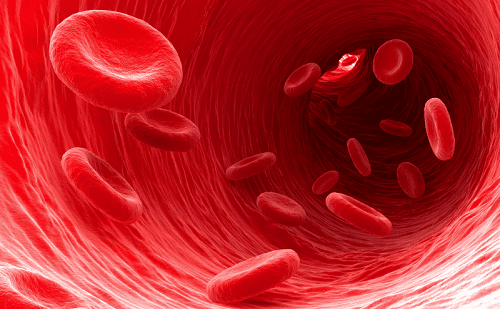
The body uses blood for a variety of vital processes, including the following:
TransportationThe digestive system is where nutrients from the food you eat are absorbed. Most of these are delivered straight to the liver from the circulation, where they are digested and then returned to the bloodstream to reach the body's cells. When you breathe in air, oxygen diffuses into your blood, which travels from your lungs to your heart and is transported to the rest of your body. 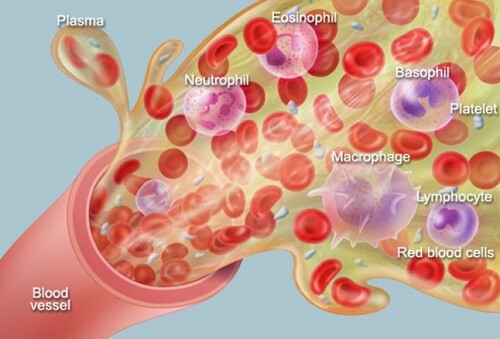
Additionally, hormones are released into the circulation by endocrine glands dispersed throughout the body, where they travel to far-off target cells. Additionally, blood collects and delivers cellular wastes and byproducts to other organs for elimination. All the body waste generated in different organs is transported to the kidneys and liver for excretion. This process of transporting waste is facilitated by blood. Waste is removed from the body in the form of urine and bile. Carbon dioxide is another waste product removed from the body through exhalation. Blood transport carbon dioxide from different tissues to the lungs for excretion. DefenseMany different kinds of WBCs defend the body against dangers from the outside, such as disease-causing germs that have gotten into circulation through a wound. Other WBCs hunt after and eliminate internal hazards like virus-infected body cells or cells with altered DNA that might increase and become malignant. 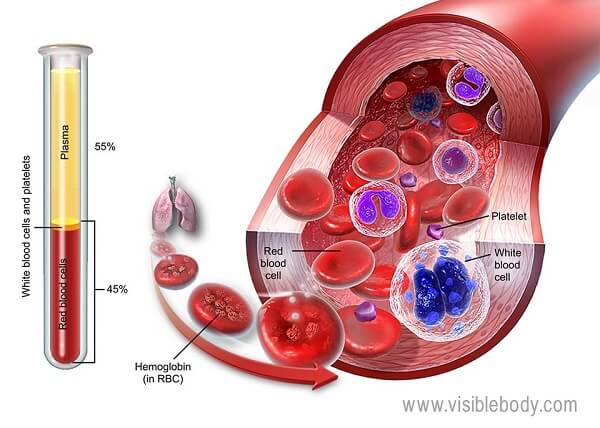
Blood platelets and certain proteins dissolved in plasma interact to form clots that plug the burst portions of the blood vessels when damage to the arteries causes bleeding. This guard against more blood loss for the body. Maintenance of HomeostasisRemember that a negative feedback loop regulates body temperature. When you exercise on a warm day, many homeostatic mechanisms are triggered, including increased blood flow from your core to your body's periphery, which is usually cooler. Heat would be released to the environment when blood flows through skin arteries, making the blood return to your body's core colder. Blood is redirected away from the skin on a chilly day to keep the body's center warm. In severe circumstances, this could lead to frostbite. 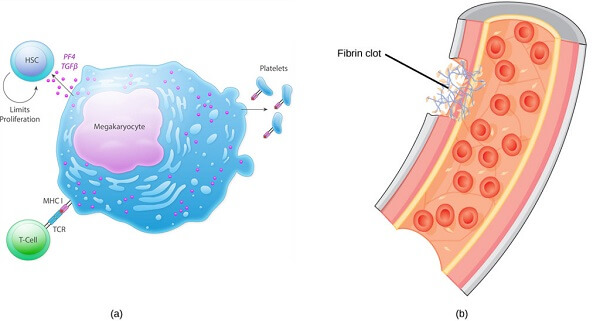
The blood also maintains the chemical equilibrium of the body. The pH of bodily tissues is regulated by buffers, such as proteins and other substances found in the blood. Blood also has a role in controlling the water balance in bodily cells. Blood DisordersBlood problems happen when a component of your blood isn't functioning properly. You can bleed excessively, have trouble clotting, or feel off. People with the majority of blood diseases may anticipate living reasonably normal lives. Your quality of life can be significantly improved by early identification and treatment. Blood diseases occur when your blood is unable to function properly. While some blood problems are inherited, others might be brought on by other illnesses, drugs, or a deficiency in minerals in your diet. 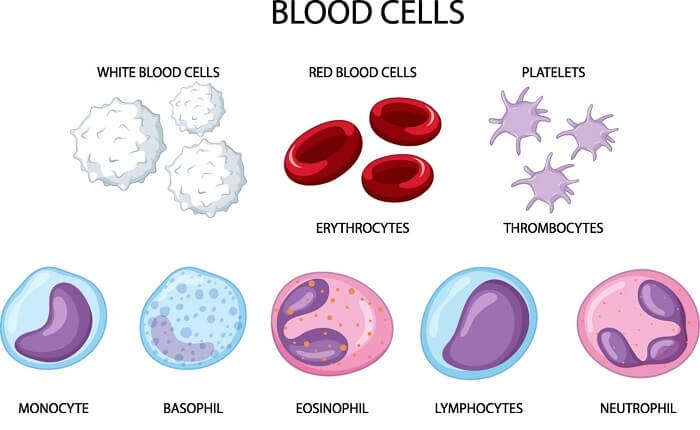
The many forms of blood diseases are numerous. Some go away entirely with therapy, or they don't produce symptoms and don't shorten their lifetime (they are benign). Some are chronic and permanent, although they do not shorten life expectancy. Sickle cell disease and blood malignancies are two other blood conditions that can be lethal. The list of blood disorders consists of:
What Effects Do Blood Diseases Have on My Body?Both liquids and solids can be found in your blood. Water, proteins, and salt are found in the liquid portion (plasma). A blood issue might arise when a portion of your blood isn't functioning properly. The platelets, white blood cells, or red blood cells make up your blood's solid component. The blood proteins are involved in blood coagulation. The number of healthy red blood cells required to deliver oxygen to the organs is insufficient in people with red blood cell diseases. They may feel chilly, worn out, or frail. White blood cell abnormalities can make a person feel sick and increase their risk of infection. Bleeding and clotting issues can occur in people with platelet problems. 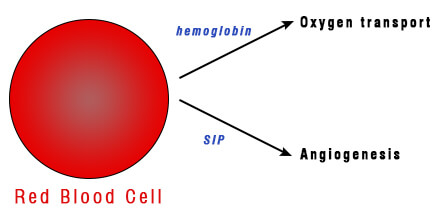
The Most Common Blood DiseasesVarious types of disorders and diseases caused due to abnormalities in different components of blood. White blood cells, red blood cells, and platelets are blood's three most important components. Deficiency in any of these will cause abnormality in normal body functions. Examples of blood diseases are - sickle cell anemia, lymphoma, leukemia., etc. These disorders can cause fatal diseases which could be life threatening. 1. Platelets Platelets' main function is to control the bleeding at the time of injury. Platelets help form clots at the point of injury and thus block the blood flow. Although platelet-related blood disorders are very rare, there are some cases where a person's platelets do not function properly, and as a result, they bleed excessively. This type of disorder is usually inherited from parents to offspring or can also be an acquired illness. 2. Red Blood Cells Red blood cells are red because they have a distinct component called hemoglobin which makes the color of blood red. Hemoglobin has the affinity to bind to gases like oxygen and carbon dioxide. Thus, the main role of red blood cells is to transport oxygen to various body tissues and remove carbon dioxide from the body. If any components of RBS malfunction, then it leads to RBC disorder. Some of the RBC-related disorders include;
3. White Blood Cells The bone marrow is where white blood cells are mostly produced. In a normal human being, around 100 billion white blood cells (WBCs) are produced daily. This number does not include the day a person suffers from any injury or infection. There are five categories of White blood cells. These are - lymphocytes, eosinophils, neutrophils, monocytes, and basophils. When people have an unusually low number of WBCs in their bodies, they suffer from leukopenia. In this condition, the person is more prone to foreign infections. Conversely, leucocytosis is a condition in which a person has unusually high WBCs. 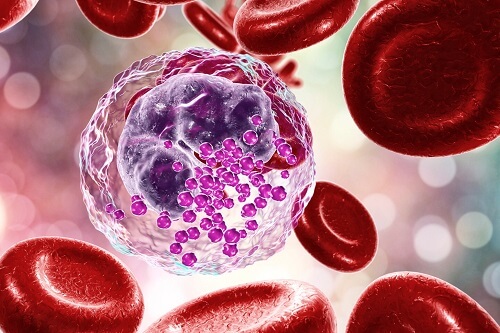
What Is the Condition's Cause?Medical illnesses or drugs may contribute to bleeding disorders, or they may be acquired. Sometimes bleeding problems have no recognized etiology. Many are familial. White blood cell counts that are abnormally low (leukopenias) can be caused by:
White blood cell overproduction (leukocytosis) has a variety of causes, such as:
Can Blood Diseases Run Through Families?Numerous blood diseases are inherited among families (inherited). Others come about independently or are brought on by disease, medicine, or starvation. What Signs of Blood Problems Are Typical?Red blood cell abnormalities frequently manifest as:
White blood cell abnormalities frequently manifest as:
Platelet DisordersThe following are typical signs of platelet disorders:
Next TopicHigh Blood Pressure
|
 For Videos Join Our Youtube Channel: Join Now
For Videos Join Our Youtube Channel: Join Now
Feedback
- Send your Feedback to [email protected]
Help Others, Please Share









